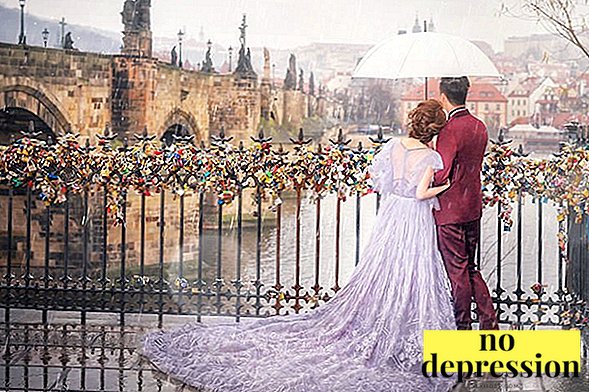By “relationship,” most people mean social contacts, often - only romantic, love.
However, the meaning of this word is much broader. It is important to know what relationships are in order to better understand people, to be aware of their own priorities in certain social situations and to solve problems more effectively.
Definition of concepts

Relations - This is a kind of behavioral program that determines how a person or another creature will interact with something.
Types of relationships:
- Natural. They are determined by the laws that exist in nature: physical (I weigh more, and he less), biological (rabbit for a lion and plants for herbivores - food) and others.
- Social. Interactions between individuals, passing under the laws and regulations that are established in this society. They are divided into administrative (director and subordinates), legal, national, international, army and civil.
- Personal. Everyone has a subjective experience, on the basis of which builds relationships with other people. The subjective attitude of a person, formed under the influence of many factors, towards someone or something relates to interpersonal relations.
Relationship - mutual behavioral program. That is, for example, the relationship between two people, each of whom has a certain behavioral program about the other, is a relationship.
Classification of relationships between people
In psychology, there are three main types of relationships, depending on:
- Directivity Exists vertical relationship format and horizontal. One should speak about vertical relations when people interacting with each other are at different levels in the social hierarchy (student and teacher, teacher and foster child, parent and child, superiors and subordinates). Accordingly, horizontal relations are those in which people who are at the same level in the social hierarchy (colleagues, classmates, classmates) are involved.
- Goals. Starting social interaction, a person always thinks about why he needs it. If he seeks to find friendship, companionship, love, then such interactions are called personal. If this is communication with the goal of concluding an agreement, jointly carrying out a work assignment, and so on, then this business relations.
- Emotional coloring. In the process of communication and other interactions, a person begins to better understand how he relates to another person.
Depending on the emotions that people experience when social contact, distinguish positive, negative and neutral relations.

Also of great importance is the degree of closeness between people. There are the following levels:
- Acquaintance. At this level, people practically do not know each other, and in order to get close, they need to communicate, find common interests. In this case, not all dating pass to the next stage.
- Friendship Friends are acquaintances with whom we managed to get moderately close. Sometimes you can have fun with such people, get their advice and sometimes help, but they don’t share secrets with them.
- Partnership. The intermediate stage is between friendship and friendship. Comrades have common interests, common affairs, they are happy to spend time with each other, they can offer help, they can be trusted with much, although not all. A significant part of people already at the partnership stage is ready to recognize a person as a friend. The partnership may eventually develop into a friendship.
- Friendship. Strong, time-tested relationships in which harmony and trust reign. Friends feel comfortable in each other's company, they like to spend time together, they are ready to give support and help. Friends usually have a lot of common interests and activities, and many key opinions converge. As a rule, ordinary friends have relatively few real friends: there are hardly more than five people. Also, the level of friendship is divided into additional sublevels.
At the first sublevel, people are simply friends; at the second, they consider themselves best friends. The degree of mutual understanding and trust at these sublevels differ.
- Love, marriage. In ideal love relationships, there is the highest degree of trust, openness, there is a willingness to start a family. Genuinely loving people are ready to do almost everything for the sake of their love object. But in practice, unconditional trust in some couples is observed only in the first years. In order for it to persist for decades, it is important to work on yourself, be able to find compromises, make a partner.


The family stands apart: a person cannot choose which parents to be born, but between the child, mother and father (and especially between mother and child) a close relationship is always formed, which is not always healthy.
In the first years of his life, the child desperately needs his parents, they are an ideal for him, and he is most attached to his mother. Later, as he grows older, he separates and begins his own life, and communication with parents becomes less close.
Types of relationships in teams
During growing up, a person is faced with a multitude of groups that work on similar models and have similar relationship formats. These are school groups (class), groups in secondary special and higher institutions (group), relationships at work.
The main types of relationships in teams:
- Conflict. Conflicts are a natural part of human relationships, and they are far from always detrimental.
However, frequently occurring conflict situations signal that it is necessary to change something in the system of relations: discuss problems, talk with the instigators, and find compromises.
- Competitive. Both healthy and unhealthy competition for the best place in the team is a common phenomenon. It is important for executives (teachers, superiors) to encourage healthy competition in the team they control, and to promptly eliminate the one that causes conflicts and quarrels.
- Friendly and other close relationships (friendship, companionship, love). Having close connections is important, especially in educational groups. However, in working relationships, this is not always beneficial: if the personal relationship of an employee with another employee deteriorates, it will affect productivity.

The working groups also highlight the relationship:
- between departments;
- with partners organizations, companies and organizations in general;
- with the state;
- international.
Also, as already mentioned, relationships, including those that exist in groups, are divided into vertical and horizontal.
Types of business relationships
Business relationships, depending on the consequences, are divided into:
- Constructive. They help business interactions to develop in a favorable direction, have a positive effect on productivity.
- Destructive. Impact disruptive business interactions.
Also, business interactions are divided by content into:
- Immediate. In direct relations, communication takes place directly, live, and therefore has greater weight, since in such interactions there is more opportunity to assess a person’s reaction to certain information.
- Mediated. The interaction is carried out through textual information: written reports, letters, orders, orders and so on.
Despite its dryness, mediated relationships are also very important for the organization of the workflow.

Political
The main forms of political relations are observed between:
- government regulatory bodies and constituent organizations;
- state, government and social associations;
- the state and organizations that are not property of the state;
- various political parties and their supporters;
- political parties and associations that are not related to politics;
- representatives of the government and the bulk of citizens;
- States;
- state and international political unions.

The extent to which the goals and priorities of these associations coincide depends on how productive they will be and how long they will last.
Between the sexes
As with relationships in general, the relationship between a man and a woman has levels:
- acquaintance;
- friendship;
- partnership;
- friendship;
- love.
To become a friend, you need to go through the first three levels of communication.
But in the case of love, everything is more complicated: often, if mutual feelings suddenly arise, the lover can automatically move from the first or second level to the fifth and become almost the center of the world.
Contrary to the common stereotype, friendly relations between a man and a woman are possible, but only if none of them does not feel for each other romantic feelingssuch as desire, passion, love, love.

In some cases, there is a friendship in which some of the friends (or both at once) hide their true feelings. If none of them dare to open up, relationship will remain within the framework of friendly.
Also in some friendships between a man and a woman, there is sex, pleasant for them and non-binding. Such friendships called friendship with privileges.
The romantic relationship between a guy and a girl can be divided into the following types:
- Mutual development. At the heart of such relationships is the desire for joint development. A man and a woman are engaged in joint activities, communicate a lot, have a lot of common interests, can work together, support each other in the process of improvement. Such relationships are a frequent choice of rationalists, pragmatists.
- Full understanding. This is a spiritual union, in which each of the partners is comfortable so much that they get pleasure only from the fact of being next to each other.
- Payment. In such a relationship, at least one of the partners seeks direct profit.
Such a union is not always bad, especially if a man and a woman can negotiate between themselves.
- Experiment. A man and a woman, who are in such relationships, strive to remake a partner for themselves, so that he is as comfortable as possible. This relationship is hardly worth pursuing.
- Procrastination One of the most unpleasant types of relationships. A man and a woman who are in union often quarrel, can diverge and converge again. They should break up, but for some personal reasons they continue to be together.
Between husband and wife
The main types of marital relations:
- Child Parenting. In such families, one spouse puts himself in the position of the child, while the other takes care of him and directs his actions as if he is his parent. The partner-child is often a weak, weak-willed person who wants to be removed from her responsibility.
- Codependency. In such families, interactions are built in accordance with the Karpman triangle: each partner from time to time assumes the role of "savior", "victim" or "pursuer". This is usually due to the fact that one of the partners suffers from pathological dependence.
- Merger. In such families, one of the partners seeks to achieve complete submission, and the second partner as if “merges” with him, losing his own personality.
- Violent. Relationships are based on various types of violence (sexual, physical, psychological). Quitting them is often not so easy, because the oppressed partner is too dependent on the oppressor and loses vigilance during periods when the oppressor stops the violence and pretends to "smooth down the blame."
- Disunity. Husband and wife are separated from each other and each live their own lives.
- Affinity. Spouses feel each other brother and sister, because they are extremely close and have a lot of intersections in their views and interests.
- Partnership. Balanced, toxic-free union.

Relationships are an important element of life, pushing a person towards development, helping to feel better, more confident and meaningful.
It is important to be sensitive to the feelings of loved ones learn to compromise and show willingness to support - and then the relationship with them will last long and will give a lot of positive emotions.
About the types of relationships between people in this video:



